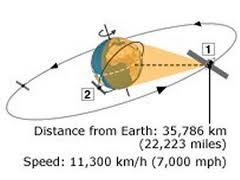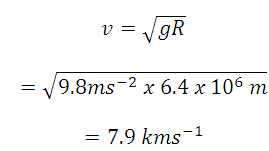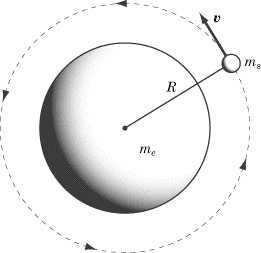Satellites are objects that orbit around the earth. They are put into orbit by rockets and are held in orbits by the gravitational pull of the earth. The low flying Earth satellites have acceleration 9.8 ms-2 towards the centre of Earth. If they do not, they would fly off in a straight line tangent to the Earth. When the satellite is moving in a circle, it has acceleration . In a circular orbit around the Earth, the centripetal acceleration is supplied by gravity and we have,
. In a circular orbit around the Earth, the centripetal acceleration is supplied by gravity and we have,
Where v is the orbital velocity and R is the radius of the Earth (6400 km). From Eq. 5.25 we get,
This is the minimum velocity necessary to put a satellite into the orbit and is called critical velocity. The period T is given by
= 5060s = 84 min approx.
If, however, a satellite in a circular orbit is at an appreciable distance h above the Earth’s surface, we must take into account the experimental fact that the gravitational acceleration decreases inversely as the square of the distance from the centre of the Earth (Fig. 5.16).
The higher the satellite, the slower will the required speed and longer it will take to complete one revolution around the Earth.
Close orbiting satellites orbit the Earth at a height of about 400 km. twenty four such satellites from the Global Positioning System. An airline pilot, sailor or any other person can now use a pocket size instrument or mobile phone to find his position on the Earth’s surface to within 10m accuracy.



